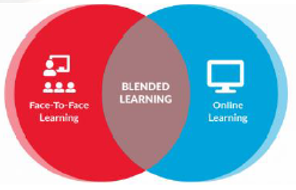A Framework for Providing Augmented Reality as a Service Provided by Cloud Computing for E-Learning
Main Article Content
Abstract
The main objective of the proposed study is to develop an e-learning system using augmented reality technology one of the main problems faces using AR in education is the huge computational power needed to transfer 2D animation to enrich learning facilities. Such problem increases when using smart mobile devices that suffer from hardware limitation. A promising framework is used to utilize cloud services to support augmented reality applications on the cloud. Such method significantly reduces consumption of memory and processing units when dealing with large size videos or images. Hence the augmented reality processing is speeded up to meet the requirements of E-learning systems.
The proposed work was conducted on 100 students from different academic levels in the first semester of the year 2022. Three experiments were conducted for different fields of education including two-dimensional images using Unity Program (3D Software) to draw 3D objects and Vufoira software development kit. The experimental results showed promising results as the application has the flexibility to work on different platforms. Moreover the consumed memory to run the application is reduced significantly. The results also showed high performance for the application when drawing complex 3D images and when dealing with different animations.
The study supported with a detailed questioner that proofs the importance of AR in the field of E-learning.
Article Details
References
S. M. Wang, “Study on Building a Virtual Reality Model for Observingthe Movements of the Moon and the Sun for Elementary Schools andJunior High Schools,” Master’s Thesis, Available from National DigitalLibrary of Teses and Dissertations in Taiwan
Y. C. Wu, “The Design and Construction of the Virtual Reality WebbasedDigital aterials in the Field of Nature Science and Life Technologyfor the Elementary School - the Moon Misconceptions InstructionWebsite,” Master’s Thesis, Available from National Digital Library ofTeses and Dissertations in Taiwan
M. S. Tsai, “The Effects of Online Computer Learning Game IntegratingInstruction on Fourth-Graders’ Moon Learning and MisconceptionChange,” Master’s Thesis, Available from National Digital Library ofTeses and Dissertations in Taiwan
J. Fitzpatrick, Planning guide for onlne and blended learning. Michigan: The Michigan virtual university [Online]. Retrieved form : https://michiganvirtual.org/wp-content/uploads/2017/03/PlanningGuide- 2012.pdf, 2011.
C. Wilson, 6 blended learning model and platform [Online]. Retrieved from: https://www.teachthought.com/learning/6-blended-learning-models-platforms/, 2018.
A. Hamila and Mohamed-amin, Implementation of Blended Learning in Higher Learning Institutions: A Review of the Literature. Faculty of Education, National University of Malaysia, Bangi, Selangor, Malaysia, 2016.
Wu HK, Lee SWY, Chang HY, Liang JC (2013) Current status, opportunities and challenges ofaugmented reality in education. ComputEduc 62:41–49
Santos MEC, Chen A, Taketomi T, Yamamoto G, Miyazaki J, Kato H (2013a) Augmented realitylearning experiences: Survey of prototype design and evaluation. IEEE Trans Learn Technol7(1):38–56
Prieto LP, Wen Y, Caballero D, Dillenbourg P (2014) Review of augmented paper systems ineducation: an orchestration perspective. J EducTechnolSoc 17(4):169–185
Muñoz T (2017) Supporting technology for augmented reality game-based learning (Doctoraldissertation, Universitat de Girona, Departamentd’ArquitecturaiTecnologia de Computadors)
Yuen, S. C. Y., Yaoyuneyong, G., & Johnson, E. (2011). Augmented reality: An overview and five directions for AR in education. Journal of Educational Technology Development and Exchange (JETDE), 4(1), 11.
Khamis, Mohamed Attia (2015), Virtual Reality Technology, Augmented Reality Technology and Mixed Reality Technology, Journal of Education Technology, No. 25, Cairo: The Egyptian Association for Educational Technology.
Santos, Marc Ericson C., Angie Chen, TakafumiTaketomi, Goshiro Yamamoto, Jun Miyazaki, and Hirokazu Kato. "Augmented reality learning experiences: Survey of prototype design and evaluation." IEEE Transactions on learning technologies 7, no. 1 (2013): 38-56.
Abdel Razek Khaled Mansour, p., &Azzam. (2021). The use of augmented reality technology in developing some scientific concepts and information search skills among middle school students in the State of Kuwait. Journal of the College of Education (Assiut), 37(2), 1-38.
WeerasingheM,QuigleyA,Ducasse J, PuciharKC? ,KljunM(2019) Educational augmented reality games. In: Augmented reality games II. Springer, Cham, pp 3–32
Mohamed Elkholy, Marwa A. Marzok, "Light weight Serverless computing at fog nodes for internet of things systems," Indonesian Journal of Electrical Engineering and Computer ScienceVol. 26, No. 1, April 2022, pp. 394~403 ISSN: 2502-4752, DOI: 10.11591/ijeecs.v26.i1.pp394-403
Ab Aziz, K., Ab Aziz, N. A., Yusof, A. M., & Paul, A. (2012). Potential for providing augmented reality elements in special education via cloud computing. Procedia Engineering, 41, 333-339.
M. Dealessandri, “What is the best game engine: is Unity right for you?,” gamesindustry.biz, 16-Jan-2020.
Mohamed Elkholy and Ahmed ElFatatry, “Trusted Cloud: "Towards a Secure Storage in Cloud Computing,” In Proceeding of 18th International Conference on Computer and Information Technology (ICCIT-2016), pages 40-46, Paris, France, 2016.
OpenCV team, “About opencv,” opencv.org. [Online]. Available: https://opencv.org/about.
M.T.(Microsoft),“C_Sharp_(programming_language),”wikipedia.org.[Online].Available: https://en.wikipedia.org/wiki/C_Sharp_(programming_language)
Qiao, X., Ren, P., Dustdar, S., Liu, L., Ma, H., & Chen, J. (2019). Web AR: A promising future for mobile augmented reality—State of the art, challenges, and insights. Proceedings of the IEEE, 107(4), 651-666.
Mekni, M., & Lemieux, A. (2014). Augmented reality: Applications, challenges and future trends. Applied computational science, 20, 205-214.
Palmarini, R., Erkoyuncu, J. A., Roy, R., &Torabmostaedi, H. (2018). A systematic review of augmented reality applications in maintenance. Robotics and Computer-Integrated Manufacturing, 49, 215-228.
Chen, Y., Wang, Q., Chen, H., Song, X., Tang, H., & Tian, M. (2019, June). An overview of augmented reality technology. In Journal of Physics: Conference Series (Vol. 1237, No. 2, p. 022082). IOP Publishing.
Mystakidis, S., Christopoulos, A., &Pellas, N. (2022). A systematic mapping review of augmented reality applications to support STEM learning in higher education. Education and Information Technologies, 27(2), 1883-1927.
Challenor, J., & Ma, M. (2019). A review of augmented reality applications for history education and heritage visualisation. Multimodal Technologies and Interaction, 3(2), 39.

